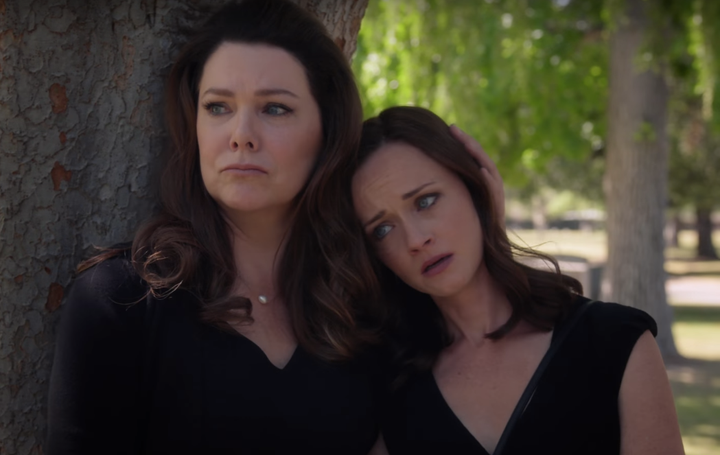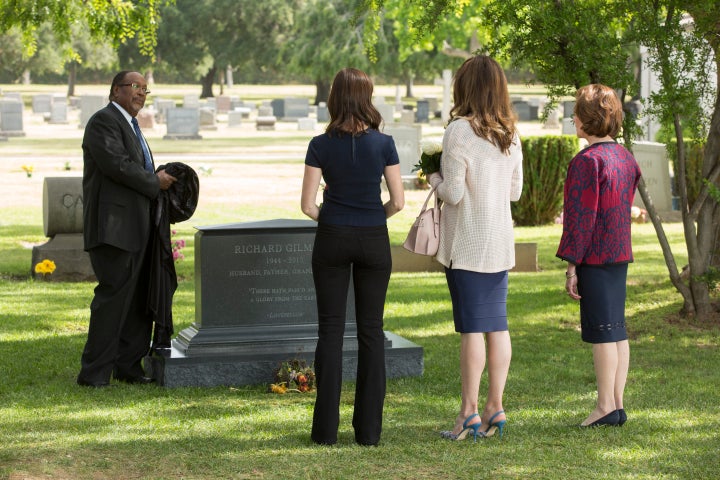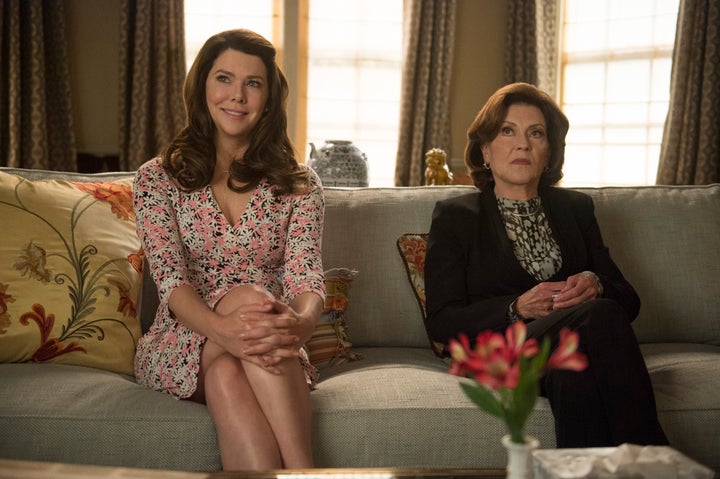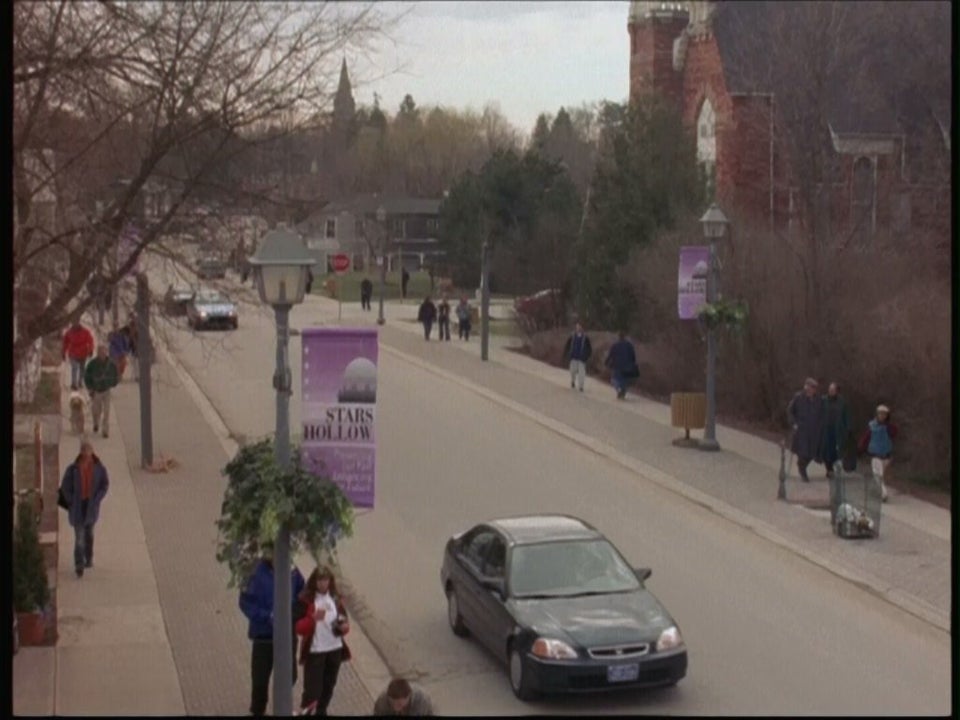
There’s a moment in the opening chapter of “Gilmore Girls: A Year in the Life,” after the first “la las” and Gwyneth Paltrow dig, when the long-awaited Netflix revival finally takes a second to breathe. Fueled by a late-night batch of coffee, Lorelai (Lauren Graham) and Rory (Alexis Bledel) convene in their rarely used kitchen to do the thing they do better than anyone else on television: talk.
“I’m just stressed out and kind of feeling my mortality lately,” Lorelai says after confessing that she willingly flipped through a brochure for an all-expenses-paid cruise, much to their shared horror.
The line is especially significant given that the series, much like its caffeine-infused hero, is also contending with its mortality. Nine years after it was cancelled by the CW on the heels of a rudderless final season, “Gilmore Girls” has become the latest in a long line of early 2000s series to get the revival treatment. But instead of abandoning what made the show so beloved, “A Year in the Life,” at its best, honors the essential themes of the series (family, fighting and Al’s Pancake World, duh) by taking the Gilmore women on a yearlong journey of grief and self-discovery.
Besides the steady stream of “Tuck Everlasting” water under Stars Hollow that’s apparently keeping everybody ageless, the undercurrent of the revival series is the death of actor Edward Hermann, who embodied Gilmore family patriarch Richard. His absence strikes Lorelai, Rory and his wife of 50 years, Emily (Kelly Bishop), who also shared a deep bond with Hermann off-set, in both devastating and humorous ways.

Each woman is facing a crossroads in life. Lorelai, now in a full-fledged relationship with Luke (Scott Patterson), is questioning her happily ever after. A sizable inheritance for an expansion of Luke’s Diner is revealed to be Richard’s parting gift to his daughter’s presumed husband, although Emily is happy to remind everybody that they haven’t gotten married yet. Emily is unleashed as a widow in mourning, wearing jeans, Marie Kondo-ing her Connecticut mansion and trying to maintain some semblance of normalcy without her other half. She’s made vulnerable by blow of losing a lifelong partner, but still retains the ability to verbally decimate anyone who dares cross her.
“You never do anything unless it’s what you want to do,” Emily seethes at Lorelai in a bitter showdown after she bungles a eulogy at Richard’s wake. “You never have. You blow through life like a natural disaster, knocking down everything and everyone in your path.”
Rory, too, has been affected, but we feel her mourning most acutely in the challenges in her career. See, the great Rory Gilmore is having trouble living up to her potential, bouncing from one freelance journalism gig to another before eventually moving home. We can only imagine that one of the driving forces behind her soul searching is her grandfather’s well-documented expectations of her success. In fact, it’s in his study where she finally discovers her true calling, writing a novel about her family titled Gilmore Girls.
Midway through the first installment we learn that Richard died suddenly due to a massive heart attack. His last words were, “Get the hell away from me,” Lorelai recounts in a therapy session (yes, we get Lorelai and Emily therapy, everybody), leaving his family with little closure and a lot of unresolved anger.
For all the talk of the perpetually chippy “Gilmore” universe, the revival isn’t afraid to go to the dark side, refusing to shy away from the the division and ugliness that can arise after a loved one dies. We witness each of the Gilmore women in a moment of desperation ― Emily’s is wearing jeans, obviously ― but as winter, spring, summer and fall pass, each finds a moment of clarity amid her grief, making them that much more human in the process.

Graham and Bishop have always done the series’ heavy lifting, but their scenes together in “A Year in the Life” should make dual nominations for the actresses a given come awards season. Without the buffer that’s kept them from tackling a stable of mother-daughter issues, their relationship becomes the prism through which the series most successfully tackles the grieving process. In the closing chapter, “Fall,” an empowered Lorelai is finally able to deliver the eulogy she meant to at the start of the series after coming to a revelation on a “Wild”-inspired adventure.
Her monologue about the “best birthday ever” with her father is too long and heartbreaking to include here, but let’s just say it involves Richard Gilmore, a mall pretzel and the movie “Grease.” In perhaps the most rewarding moment of the four chapters, Graham successfully communicates the complicated but fierce love she had for him while on the phone with a mother that was never truly able to understand her.
“I got up enough courage to look up at him,” Lorelai tells Emily with tears streaming down her face. “And he was standing there with a pretzel. A giant pretzel, covered with mustard. And he handed it to me and he said, ‘Let’s go.’ And he took me to the movies.”
Big deaths on television are commonplace these days, as the stakes have been considerably raised since “Gilmore Girls” went off the air. What distinguished the series, even back when it was airing before “One Tree Hill,” however, is that it has never been particularly plot-heavy. Series creator Amy Sherman-Palladino doled out big life moments with a glorious stinginess in the original run, making sure the audience recognized the importance of each one.
We sobbed along at Rory’s Chilton graduation because the series had earned our tears and now we mourn Richard and Hermann’s death because the revival treats it with the gravity it deserves. Instead of limiting grief to some easily digestible three-episode arc, “Gilmore Girls” prefers to look death straight in the eye, much like the series “Six Feet Under” (shoutout to newly minted park ranger Peter Krause), by authentically exploring what these women have lost over the course of a year and how it has shaped them.
And as for those final four words, with death comes life. So as Lorelai Gilmore would say: “Full freakin’ circle.”

